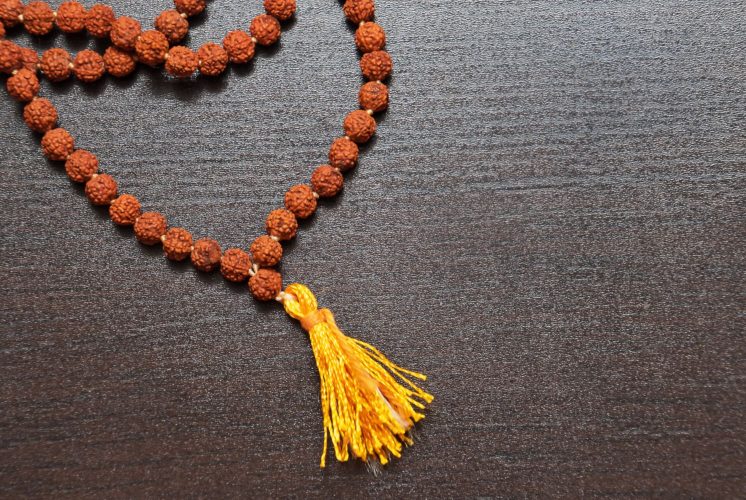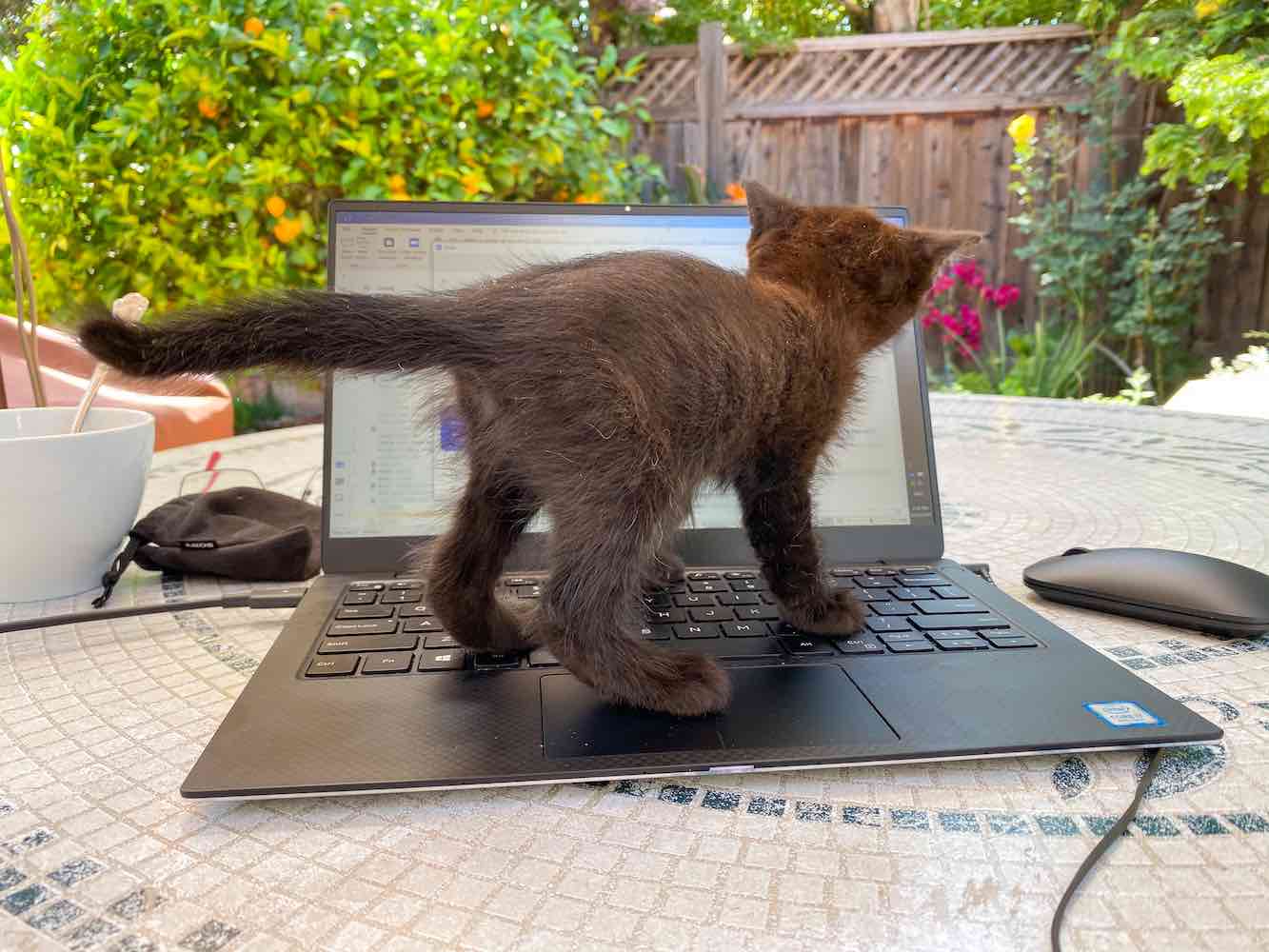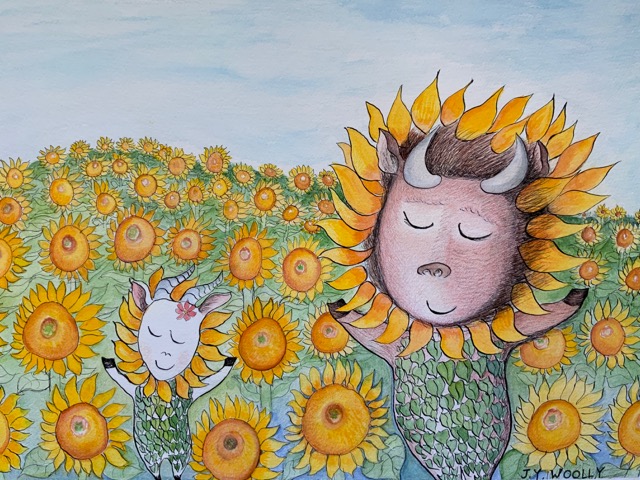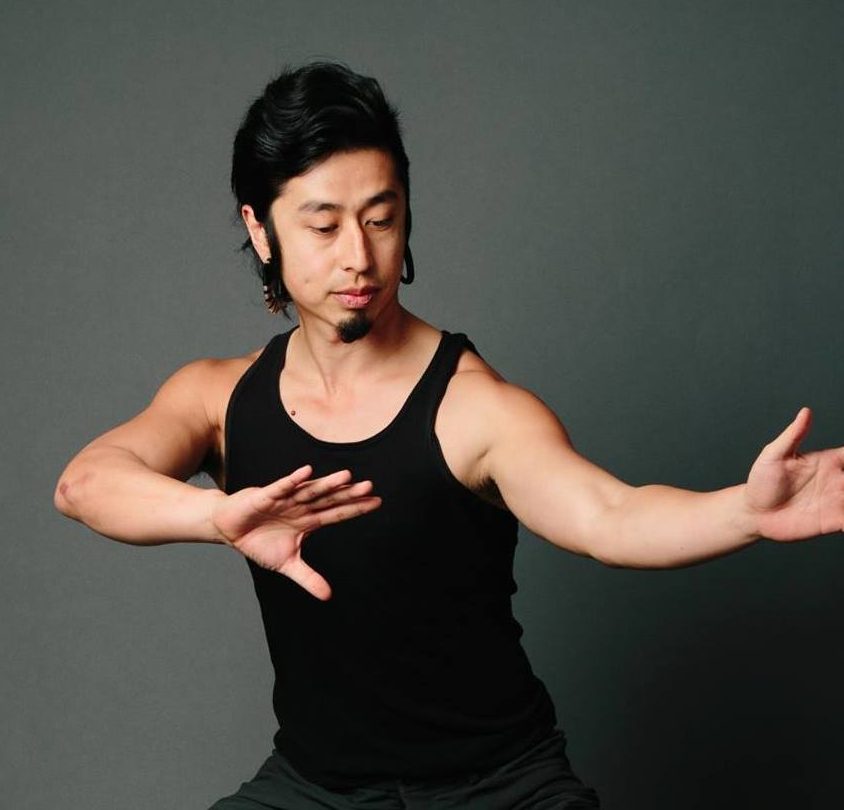Now that we’ve been introduced to malas and how to make them, I’m giving you the nuts and bolts of using the mala as a meditation tool.
The Action
With your mala, find a quiet place to sit. Bring your attention to your spine, lengthening and straightening it while also focusing on the breath, inhaling and exhaling deeply. You may want to sit on a meditation cushion, folded blankets, a block, or pillow. Eyes can be closed or open with a soft gaze at a space just in front of you. Hold your mala in your right or left hand draped over your middle finger. Begin with the bead right after the guru bead. Make your way around the mala, pulling the next bead toward you. You may want to practice moving the beads before you add the mantra.
Mantras
“The mantra is a mystical energy encased in a sound structure. Every mantra contains within its vibrations a certain power. Upon concentration and repetition of a given mantra, its energy is elicited and takes form. Japa, or mantra yoga, is that practice by which the power contained within mantras is applied for specific purposes.” –Swami Sivananda, Meditation and Mantras
A common mantra used for japa is OM, which is simple and thought to be the most powerful mantra – the mother of all sound and the origin of creation. OM is sounded on the bead; inhale on the space between beads, and then repeat the OM on the following bead. Continue around the mala.
“So hum” is another mantra I often use, as a reminder that I am a part of something bigger than myself. So means “I am,” while hum translates to “that.” So hum is sounded on the bead with an inhale on the space between each bead.
You may also choose to select a deity to call upon. The mantra for the beloved, elephant-headed deity, Ganesha, is chosen for strength and fortitude, removing obstacles, and for bestowing success.
“Om gam ganapataye namaha”
- Om (aum): “invoke pure vibrations”
- Gam (gahm): seed syllable for Ganesha
- Ganapataye (gah-na-paht-ah-yeh):
- Namaha (nah-mah-hah:) salutations
Om gam ganapataye namaha can be said on the bead, an inhale breath in between each bead.
For any mantra, rounds should be done in groups of 108. You can recite your mantra out loud or to yourself. Once you come around to your guru bead and you choose to do another round, you will reverse direction, chanting another 108 mantras, starting again with the bead next to the guru bead. Start with two rounds; each week, add a round. Try and maintain a practice for 40 days, reciting japa daily with your mala.
When you are finished with your daily session, quietly sit for a few minutes to allow your body and mind to absorb the power of the mantra.
Etiquette
I am passing on what I’ve learned from my teachers, classes, and workshops. You can follow what is right for you.
- Your mala should not touch the ground.
- The mala you practice japa with should not be worn as jewelry; however, it can be worn hidden under clothing.
- Hold your mala close to your heart during a short practice.
Good Reads
I used the following resources in my research:














